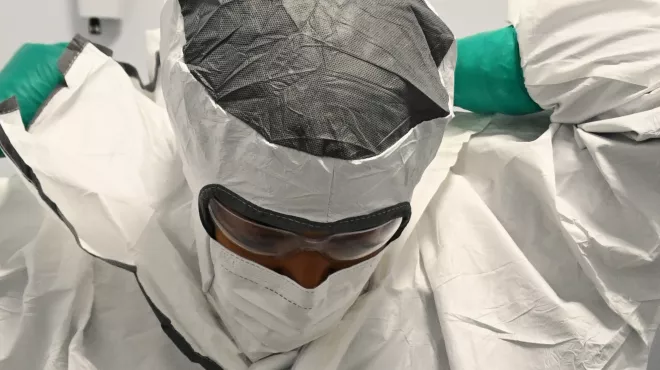
One team of researchers working in drug discovery at the Novartis Institutes for BioMedical Research resembles a police unit that’s focused on organized crime. They use an emerging approach called chemical genetics to stalk the gangsters involved with disease, springing into action when the scientific trail goes cold. They crack open difficult cases by approaching them from a new angle.
“You could look at us as detectives hoping to disrupt a criminal network,” says Rishi Jain, a Senior Investigator I in Global Discovery Chemistry who leads the team.
Chemical genetics represents a departure from the directed approach to pharmaceutical research that’s predominated since the 1980s, when scientists began focusing on known disease genes. It’s an open-ended effort to catch genetic conspirators lurking in the shadows.
“Instead of limiting ourselves to the usual suspects, we look for collaborators that are connected with the known perpetrator,” says Jain.
Genes produce proteins that signal to other proteins. In fact, proteins are organized into networks called pathways, which play an important role in healthy cells—and in disease. Molecular “criminals” seldom act alone. But scientists tend to ignore the conspirators in an effort to use their resources efficiently, and they’ve succeeded in discovering many targeted drugs as a result. The problem occurs when known disease genes produce proteins that are “undruggable,” meaning that researchers cannot yet design molecules to disrupt them.
You could look at us as detectives hoping to disrupt a criminal network.
Rishi Jain, Chemical Genetics Group Lead, Novartis Institutes for BioMedical Research
Take a recent case involving cancer. Many human tumors share a mutation that contributes to the disease by generating an aberrant protein, a discovery made through modern molecular biology and genetics. Scientists have tried to disrupt the aberrant protein, but it dodges their molecules time after time.
So the Novartis team used chemical genetics to cast a dragnet for accomplices of the cagey protein.
Combining the old with the new
The search began with an unbiased experiment that might look familiar to our ancestors. For thousands of years, people discovered drugs by observing how some natural or synthetic substance affected physical characteristics, or “phenotypes,” of cells or organisms. Ancient Egyptians, for example, discovered that they could relieve pain and fever by chewing on willow tree bark, which contains the ingredient for the world’s most widely used and versatile medicine, aspirin.

The first step in a chemical genetics project, a phenotypic screen, is a systemized version of this ancient technique. In this case, the Novartis team took cancer cells positive for the aberrant protein and cancer cells without the aberrant protein, doused them with different chemicals, and watched for interesting responses. One of the chemicals killed the cancer cells that only had the aberrant protein. But the phenotypic screen was just the beginning of the modern investigation.
The next step was to figure out what the chemical was hitting, which brings us back to the concept of protein networks. The researchers ruled out the undruggable protein as the target. They suspected that the chemical was hitting another protein in its network, an accomplice to the mob boss, but they didn’t know which one, nor did they have a detailed map of the network.
“Genetics gave us the parts list for biology, but didn’t reveal how the parts work together,” explains John Tallarico, an Executive Director in Molecular & Developmental Pathways who founded the chemical genetics group at Novartis. “Chemical genetics allows us to fill some of the knowledge gaps.”
Researchers used the chemical as bait to lure the mystery protein from cells and then turned to genome sequences to determine its identity. Ultimately, they caught and characterized the protein, an enabler of the kingpin that represents a fresh therapeutic lead.
Genetics gave us the parts list for biology, but didn’t reveal how the parts work together.
John Tallarico, Executive Director of Developmental and Molecular Pathways at the Novartis Institutes for BioMedical Research
The essence of chemical genetics, explains Tallarico, is to use molecules to test for an effect on a disease phenotype, work backward to a protein, discover what the protein does and how the small molecule affects it, and then improve the molecule. Importantly, because the researchers use molecules as bait, they know by definition that the proteins they find are druggable.
“We focus on patients, so our research must be relevant to therapy from the beginning,” Jain emphasizes. “That’s central to the Novartis approach.”



